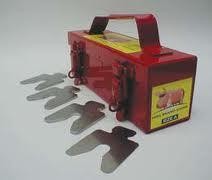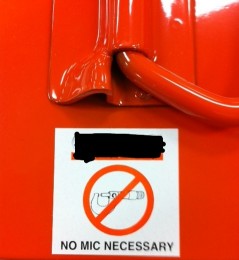Stainless steel shims are now the standard for use in shimming machinery when preforming a precision laser or dial indicator shaft alignment. They are clean, corrosion resistant, flat, and most importantly, pre-cut. Their use speeds up the alignment process significantly. However, it is very important to measure the thickness of a shim before using it.
 Practically all manufactured, pre-cut shims are stamped or etched with the thickness of the shim. But this number should simply be a guide – not a precise measurement.
Practically all manufactured, pre-cut shims are stamped or etched with the thickness of the shim. But this number should simply be a guide – not a precise measurement.
Most pre-cut stainless steel shims, regardless of the company, are manufactured using two types of shim stock:
- Thinner shims, usually 0.020″ and thinner, are made from ground stock. Most of these shims are accurate to +/-.0005″.
- Thicker shims, usually those 0.025″ and thicker, are made from rolled stock. And they can vary in thickness by more than +/- 0.005″ – ten times the tolerance of ground stock.
During a recent training class, a customer brought out a brand new box of pre-cut shims, which had a stamp on the box stating “No Mic Necessary”.
So, just to see, we measured the thickness of one of the larger shims. It was marked 0.127″, but actually measured 0.129″. While that may not seem significant, if we put three under one foot, the actual shim value would be 0.006″ more than wanted. And if we used three other shims under the other foot which were 6 mils less than the stamped value, there would be a 0.012″ soft foot put in by the aligner, which would complicate and add errors to the alignment process.
This is in no way a negative statement about the manufacturer. Shims are made, like all other machined components, to a tolerance. It is up to the end user – the aligner, to confirm what the shim thickness is.






4 Comments
Great information – trust but verify
I agree to Mike Keohane. Didn’t know there were variances in Shims. Now that I know, I will be double checking for accuracey.
if these shims are standard then why there is variation in shims, and i have one questions that after place shims whats its life, whether its destory after some time
There are variations in the steel thickness. On ground stock, the variations are normally small (less than 0.001″). On rolled plate shims, the thickness can vary by several thousandths of an inch. As to shim life, stainless steel shims should be good for the life of the installation. But shim life can be reduced by contact with corrosives or acids.